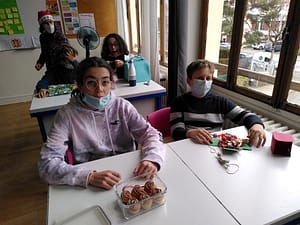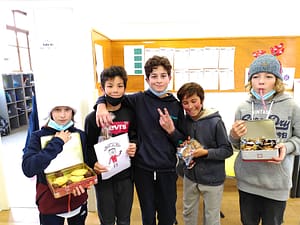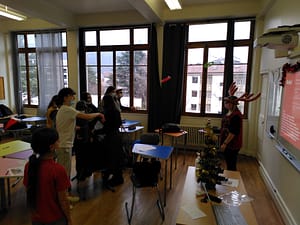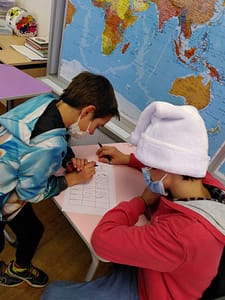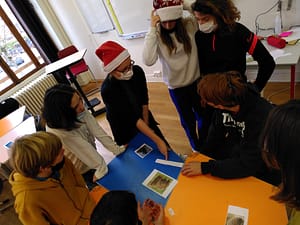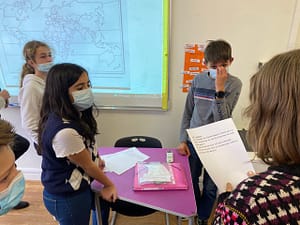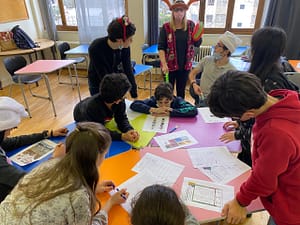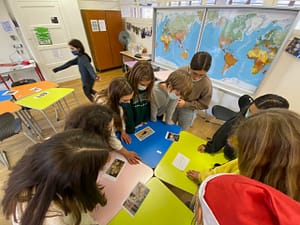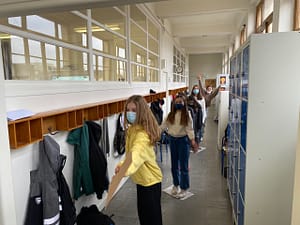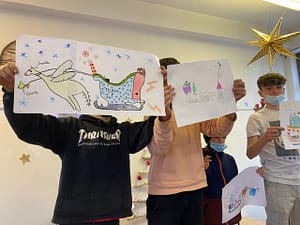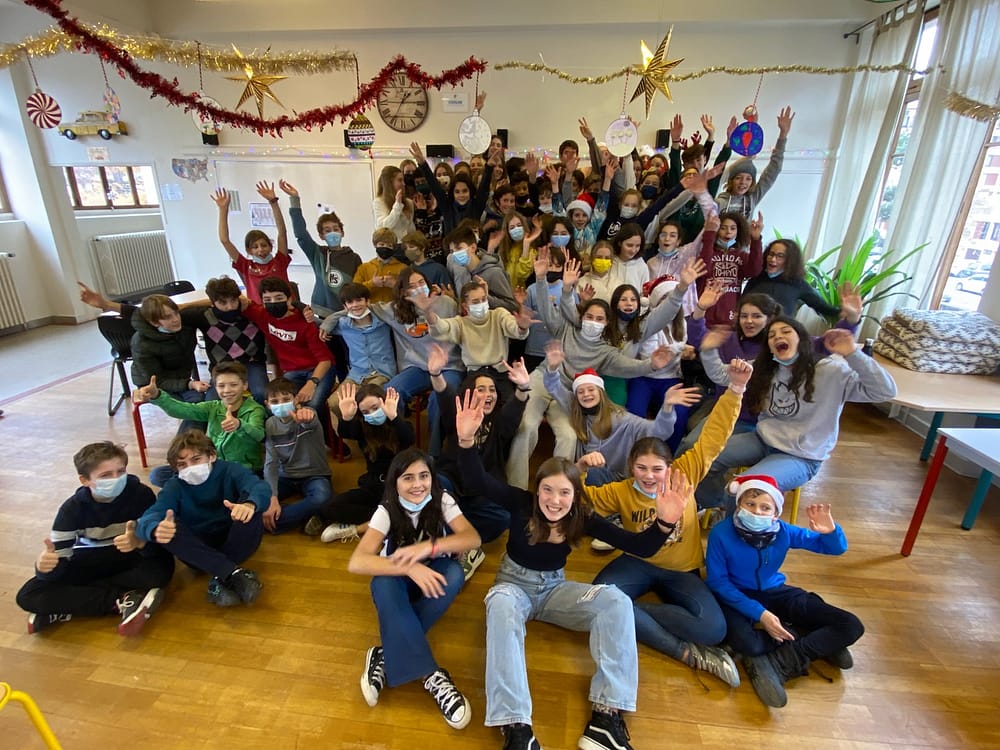Noël au collège
Avec un peu de retard, voici les photos de la dernière après-midi au collège de 2021 !
Après un repas festif et l’échange de cadeaux du secret santa, les élèves ont participé à un grand jeu dans tout le collège. Les 7 équipes ont dû relever les défis des professeurs et résoudre des énigmes ! Collaboration et réflexion étaient les maîtres mots de l’après-midi !
Le fil rouge de cet Escape Game géant : une collision entre le vaisseau du père noël et la station spatiale internationale (ISS), dû à un sabotage de GPS, met en péril la distribution des cadeaux. L’intelligence artificielle de l’ISS, Dotcom, a contacté les élèves du collège pour trouver le coupable et dessiner les plans pour le nouveau traineau du père noël !
